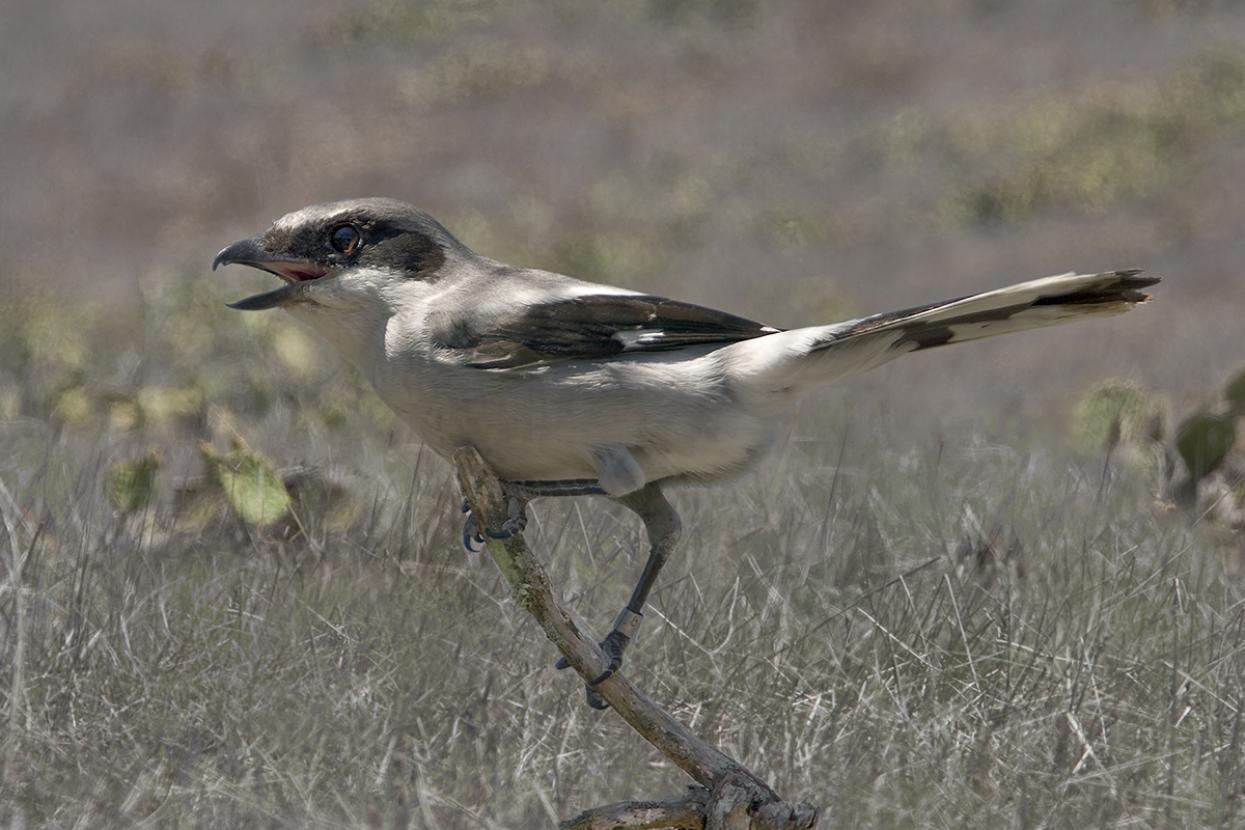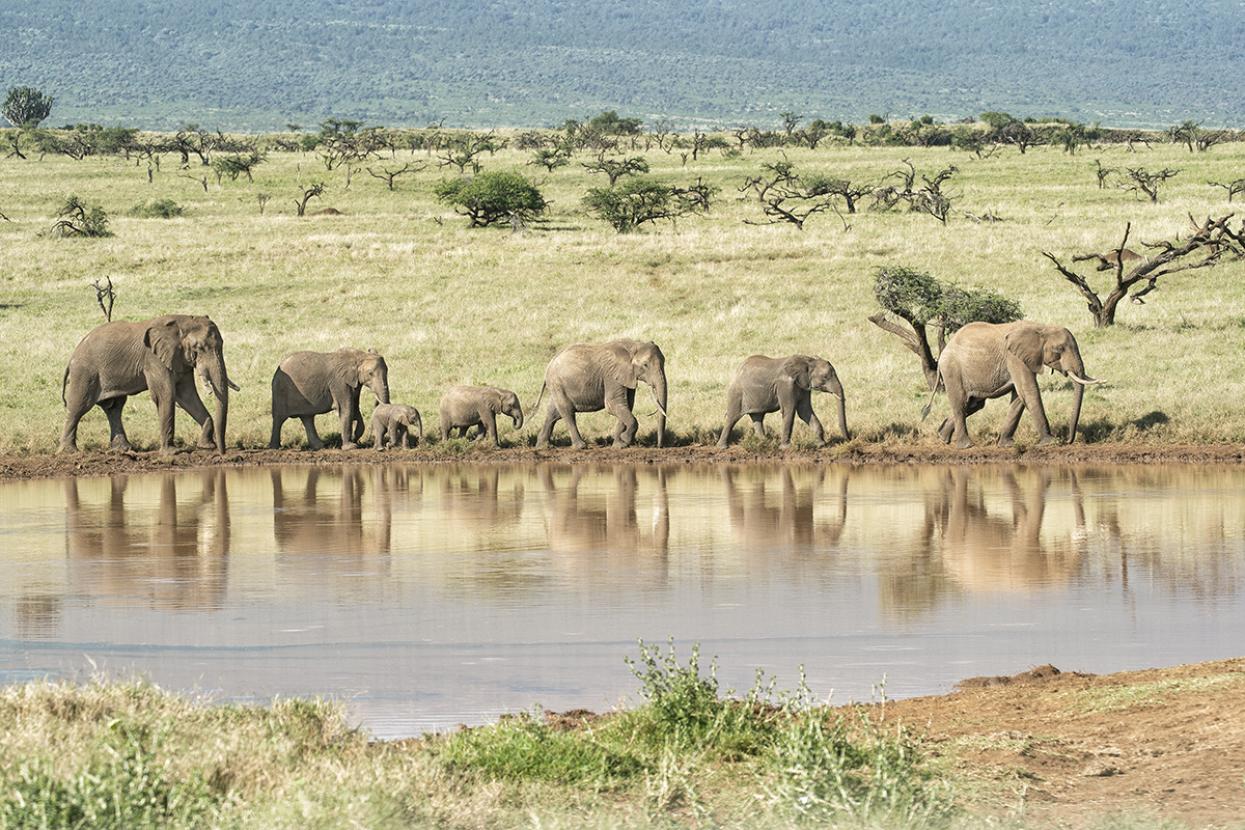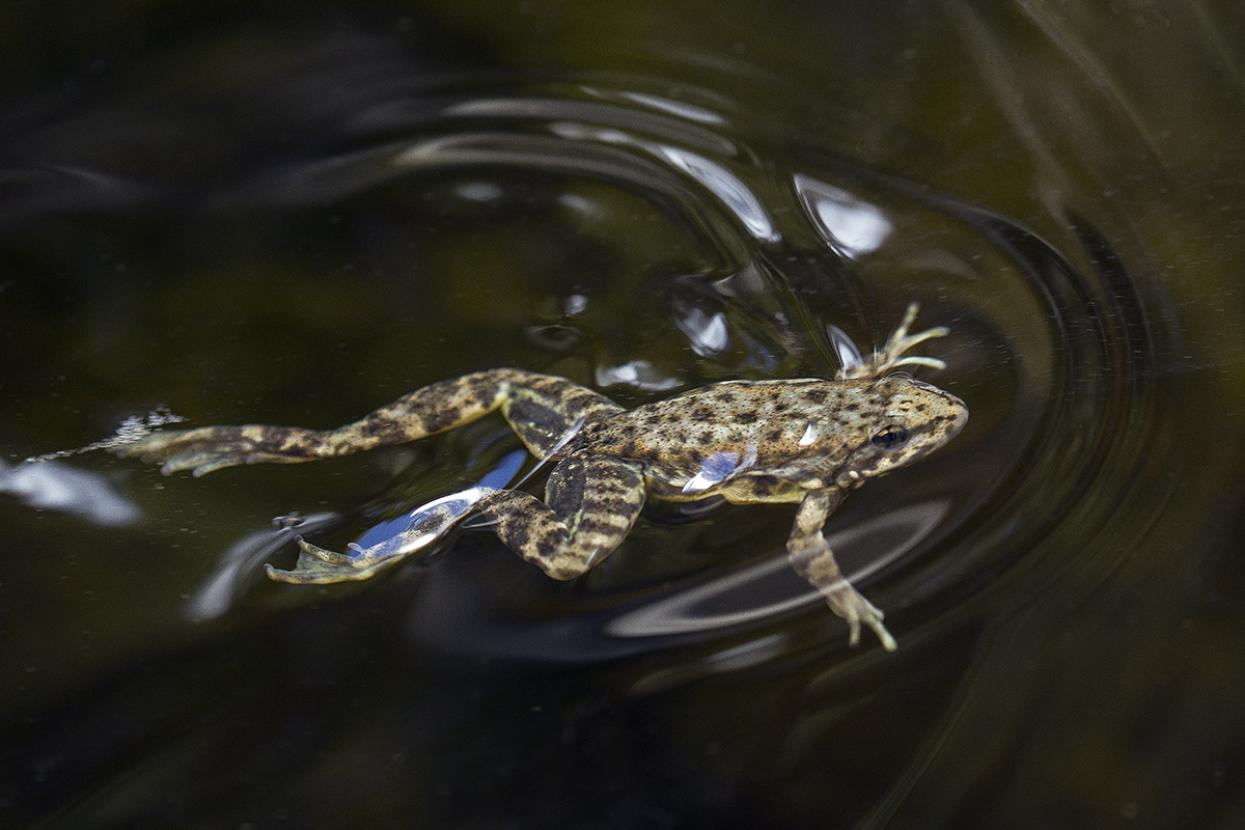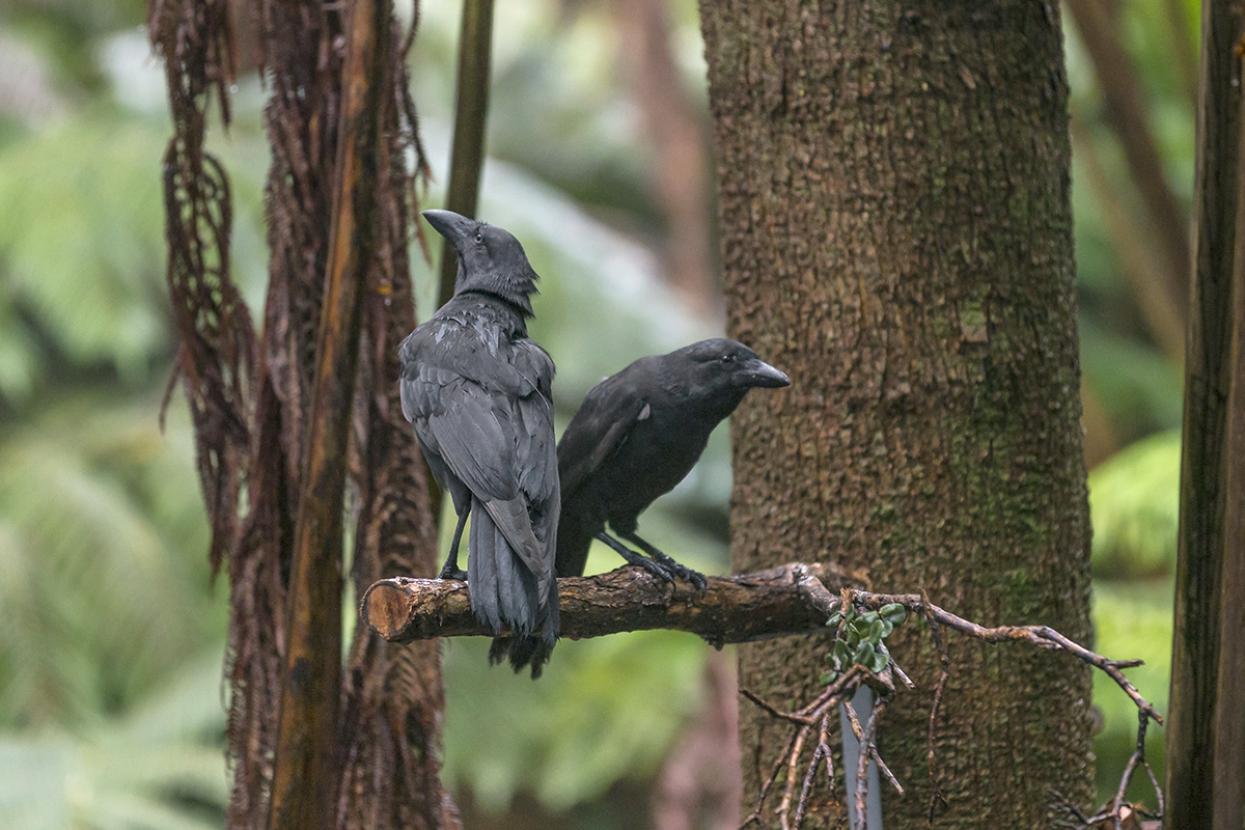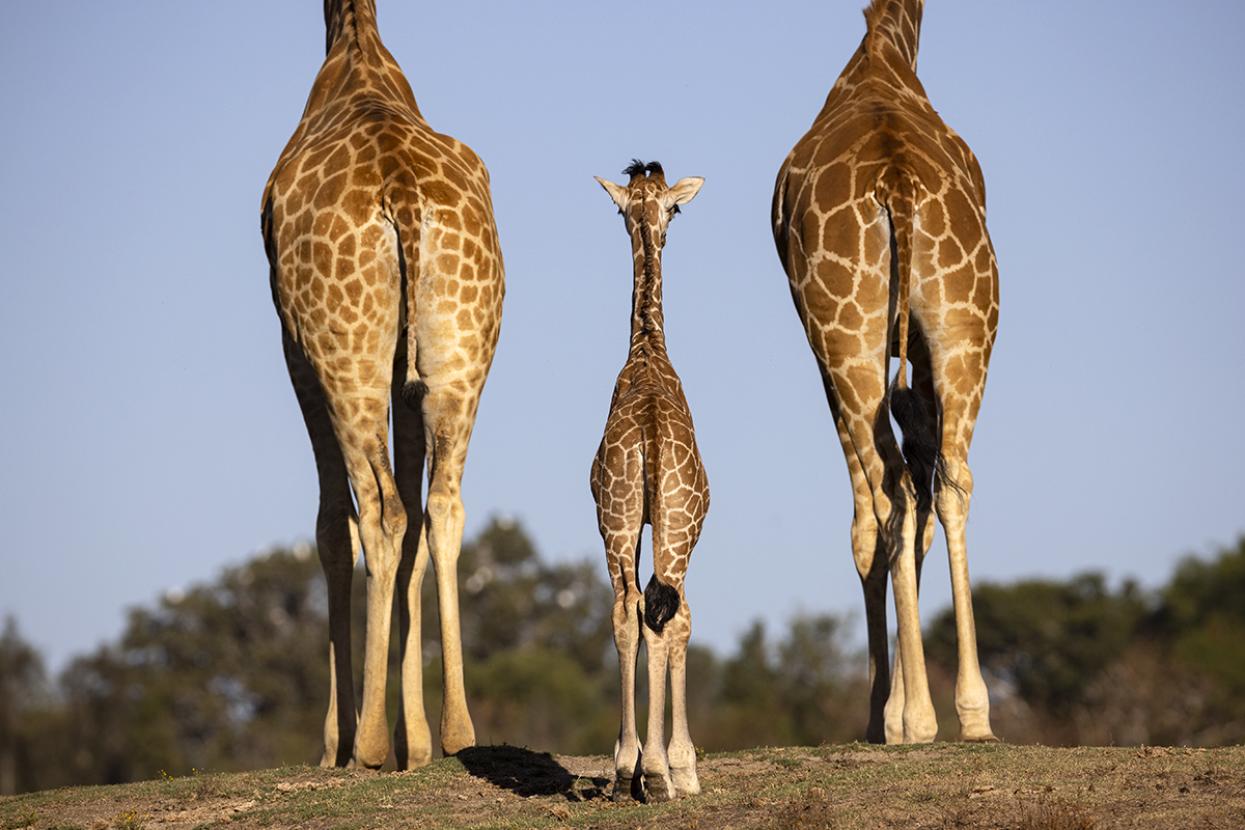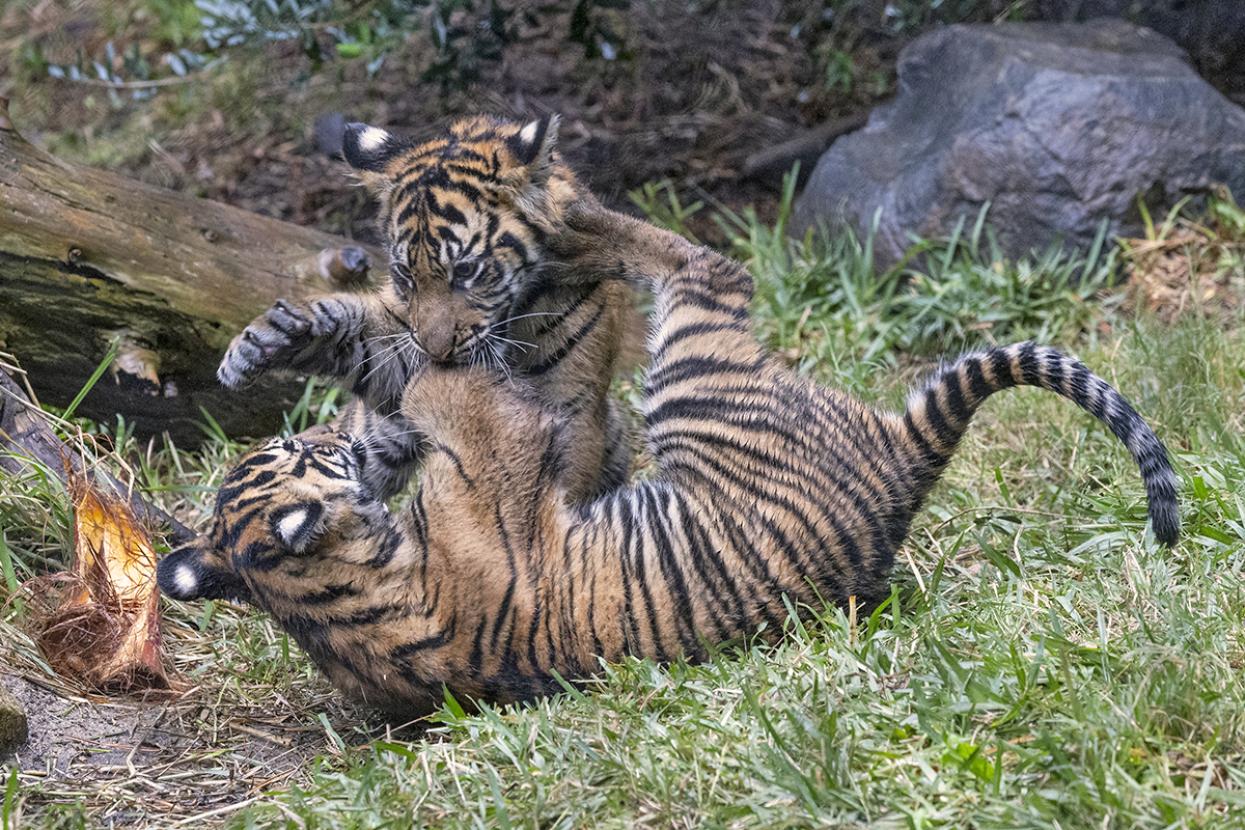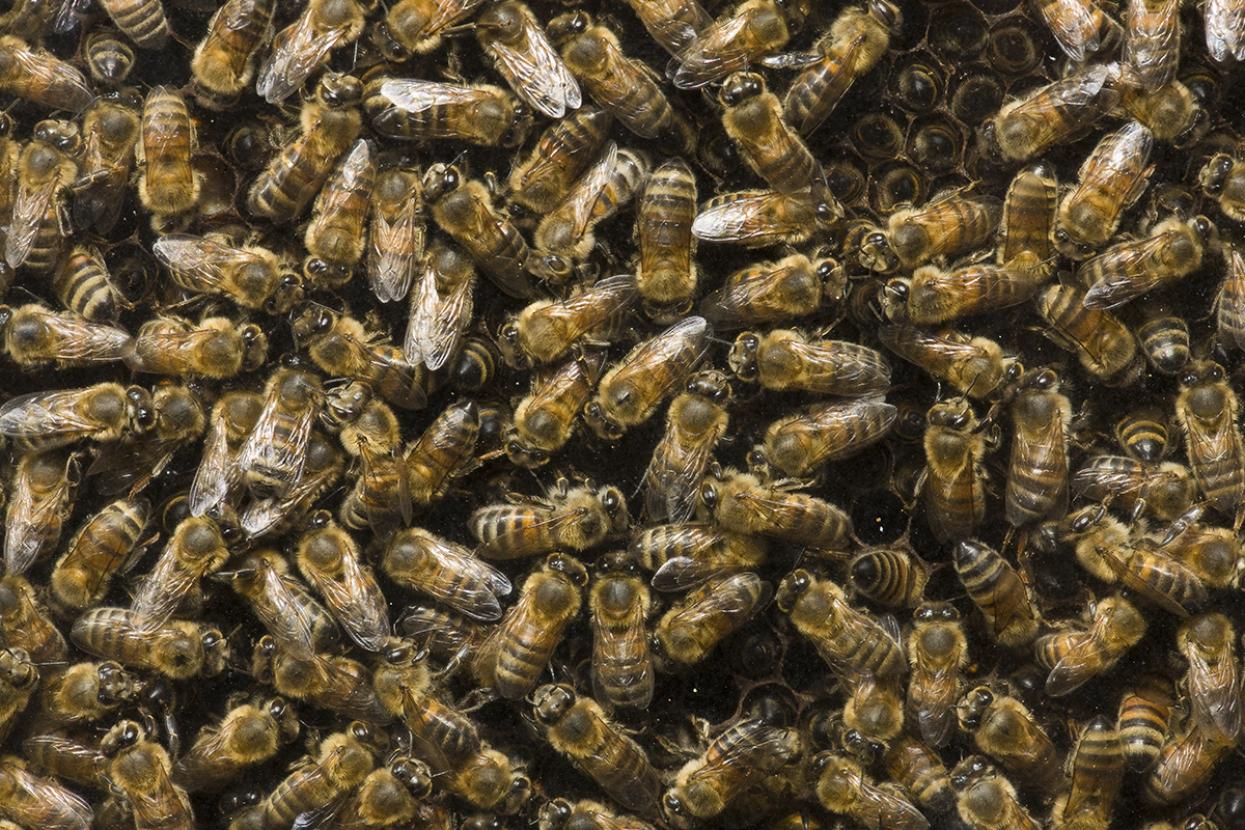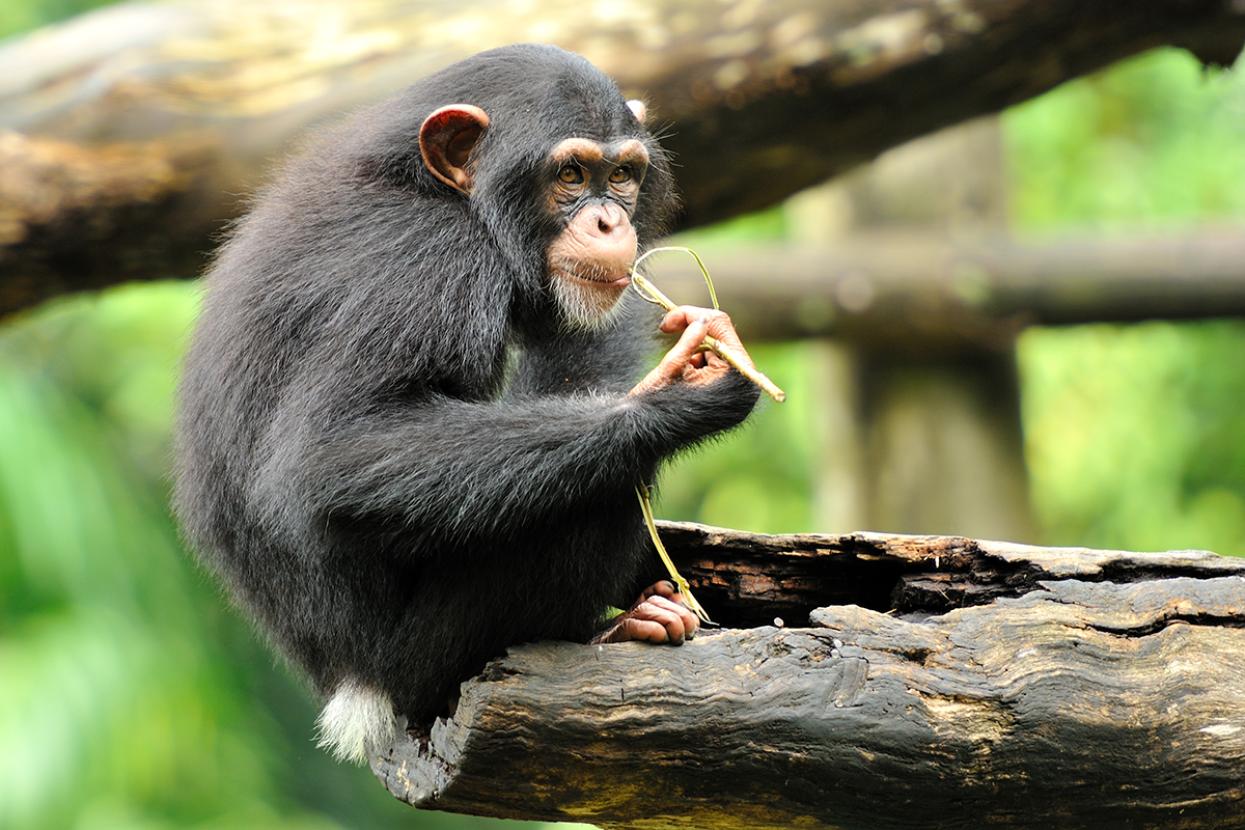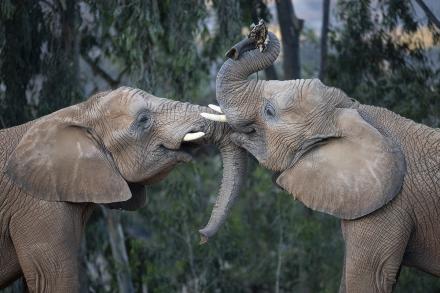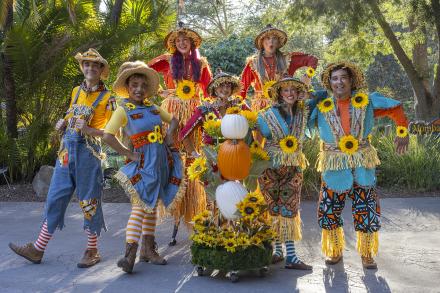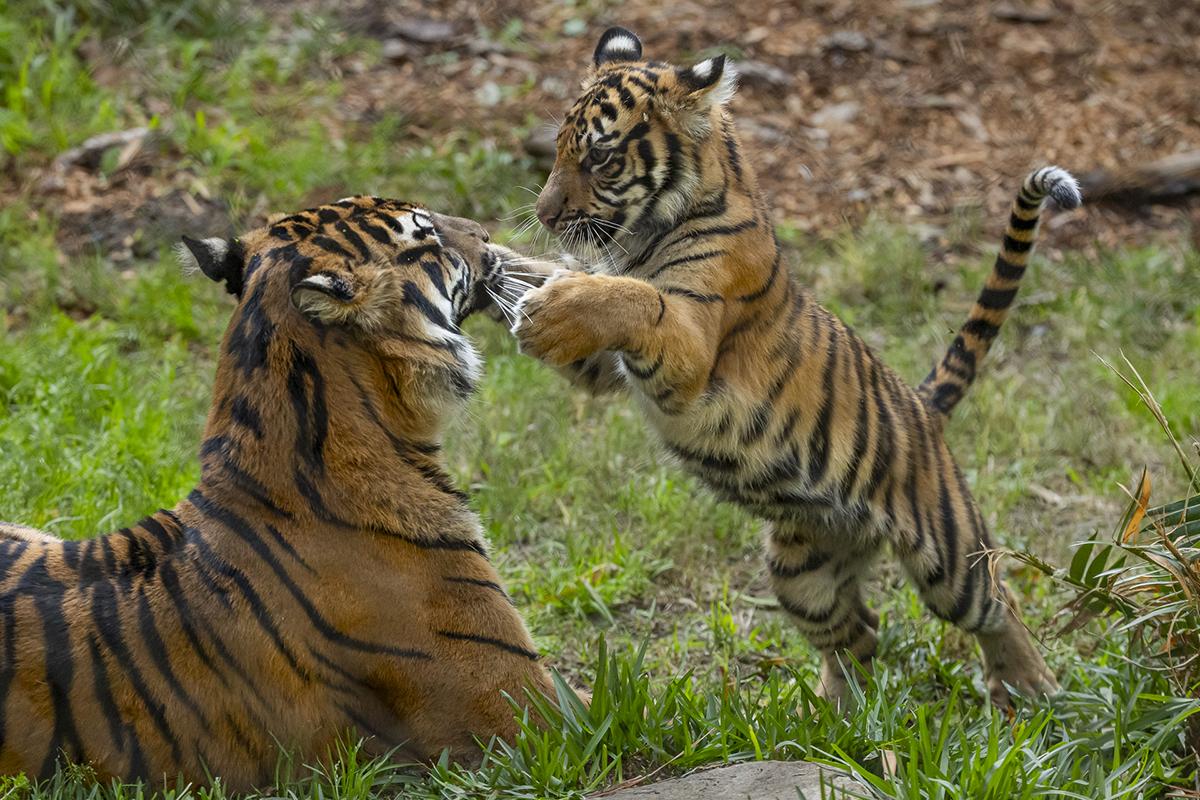
Every day is an opportunity to learn something new, and that holds true for wildlife too. Animals both young and old rely on keen observation, practice, and collaboration to hone the skills essential for success in their habitats. No matter the subject, lessons abound at every turn, showcasing the remarkable resilience and adaptability of wildlife across the globe.
Young San Clemente loggerhead shrikes learn to vocalize in several ways so they can imitate the rasps, buzzes, and trills of their community’s songs.
Language Arts
For songbirds like San Clemente loggerhead shrikes, communication is key for life in native habitats. Young birds start by listening to nearby adults and practicing their sound-making before mastering songs and calls. Songs are long and complex, used to establish territory and attract mates, while calls are simpler and can signal a location change, a potential threat, or the presence of food. Though they’re different, they’re both essential for staying connected and protected.
As songbird populations unfortunately decrease, so does the diversity of their vocalizations, with some at risk of disappearing forever. We work to protect songbirds like loggerhead shrikes through our Southwest Conservation Hub to keep their voices ringing loud and clear.
Elephant matriarchs can show the herd how to find reliable water sources, and then how to use that water for drinking, hygiene, and cooling off.
History
Every student needs a good teacher, and an elephant matriarch brings decades of experience to the position. This elder female is a role model, showing calves how to get along and adolescents how to care for the little ones. She can also bring the herd to reliable sources of food, water, and shelter, even if it’s been years since her last visit there.
This is especially important during times of drought or scarcity, which are unfortunately increasing due to climate instability. We work to protect elephants and their ecosystems through our Savanna Conservation Hub, helping ensure these pachyderms keep gaining experience they can pass down for generations.
Walk side by side with the herd when you discover the reimagined Denny Sanford Elephant Valley, opening early 2026 at the San Diego Zoo Safari Park.
As mountain yellow-legged frogs learn to swim and hop, they can more easily avoid the garter snakes, blackbirds, and coyotes that prey on them.
Biology
As amphibians, mountain yellow-legged frogs go through several stages of development, and during each one they perfect their natural physical abilities. Tiny tadpoles propel themselves through California lakes and streams with their tails, much like fish. When they grow legs as juveniles, they refine their kicking technique and coordinate their limbs for efficient swimming. And finally, once they’re adults living mostly on land, they add hopping to their repertoire.
This progression of skills helps the dexterous frogs find food, seek shelter, and evade predators. Though this species is endangered, we work through our Southwest Conservation Hub to reintroduce them to their native habitats so they can thrive at every stage of life.
By learning how to find and feed on fruit, ʻalalā also fulfill their role as seed dispersers, which helps keep their island forests healthy.
Geography
ʻAlalā, also known as the Hawaiian crow, thrived on the Hawaiian islands for generations, but because of disease and habitat loss, they became extinct in the wild in 2002. Thanks to strong partnerships through our Pacific Islands Conservation Hub, we recently supported a reintroduction plan for five birds we cared for at our Keauhou and Maui Bird Conservation Centers.
Teams ensured the ʻalalā could first develop skills they’d need to thrive in their island forest habitats. This included foraging for fruits and insects and hiding from predators in shrubs. The birds also bonded with each other, building solid relationships that would help them survive together.
Today, these magnificent birds are thriving in Maui, using every skill they learned as they soar through the island trees once again.
When a giraffe is born, its nervous system is already partially developed, so it’s ready to stand from the start.
Physical Education
With their long, strong legs, giraffes stand tall in their savanna habitat from the very beginning of their lives. After some wobbling and trial-and-error, newborns usually learn to stand within the hour and walk soon thereafter. Moms will even lovingly kick their calves to encourage them to get up and move around. Once they’re on four feet, most young giraffes are already a staggering six feet tall!
This important skill allows calves to reach their moms to nurse, as well as keep up with the herd to avoid predators such as lions, hyenas, or, unfortunately, poachers. We work with partners through our Savanna Conservation Hub to improve human-wildlife coexistence so every giraffe can thrive.
Giraffe calves are standing out at both the San Diego Zoo and Safari Park. Gallop over to connect with them on your next visit.
At around eight to ten months old, tiger cubs tag along on hunting trips and learn how to find a meal by observing the adults’ skills.
Recess
Tiger cubs really know how to scamper and roughhouse throughout their Asian forest habitats. What looks like play, though, is actually an important stage of their development.
By wrestling, pouncing, and stalking each other—or their very patient mother—they practice skills essential for hunting. They also increase balance and coordination, which are useful both on the ground and in the trees, and they strengthen their developing muscles.
Tigers only begin hunting in earnest when they’re 18 to 24 months old, so these early years of play are the perfect time for them to practice, learning every stealthy step of the way.
Sumatran tiger cub Barong is growing fast as he learns important skills every day at the Safari Park. Connect with him and mom Jillian when you explore Tull Family Tiger Trail.
A bee’s waggle dance is a remarkably expressive performance, describing their habitat’s physical layout and even the sun’s location to help others find food.
Performing Arts
While honeybees are often seen flying around, it’s their dancing that really expresses what they’re thinking. When a worker bee finds a new food source, she returns to the nest and performs what’s called a waggle dance. Moving in a figure-eight pattern, her fast-paced wiggling indicates to others the direction, distance, and even quality of the food.
Best of all, younger bees learn how to do the dance by watching. This example of social learning keeps the hive fed so the bees can continue their vital work as pollinators.
Young female chimpanzees learn to find termites earlier than young males, who spend more time wrestling to develop important hunting and defense skills.
Home Economics
Finding nutritious food is a crucial skill for any animal, and chimpanzees learn through observation how to feed themselves using tools. Mothers show their young how to carefully strip leaves from twigs, dip them into a termite mound, and slurp up the insects they pull out. Little chimps similarly learn how to use twigs to grab gobs of honey out of bee nests.
There’s more to learn than just this dipstick trick. Certain species crack open nuts with stones, or sharpen twigs with their teeth to hunt smaller mammals. We work to protect the Ebo forest through our African Forest Conservation Hub so endangered chimpanzees and other wildlife living there have all the resources they need to thrive.
Something we know for sure: your support helps us protect wildlife and ecosystems around the world. Discover more about the conservation work we do through our eight Conservation Hubs.
Chimpanzee photo credit: slpu9945/iStock/Getty Images Plus.

